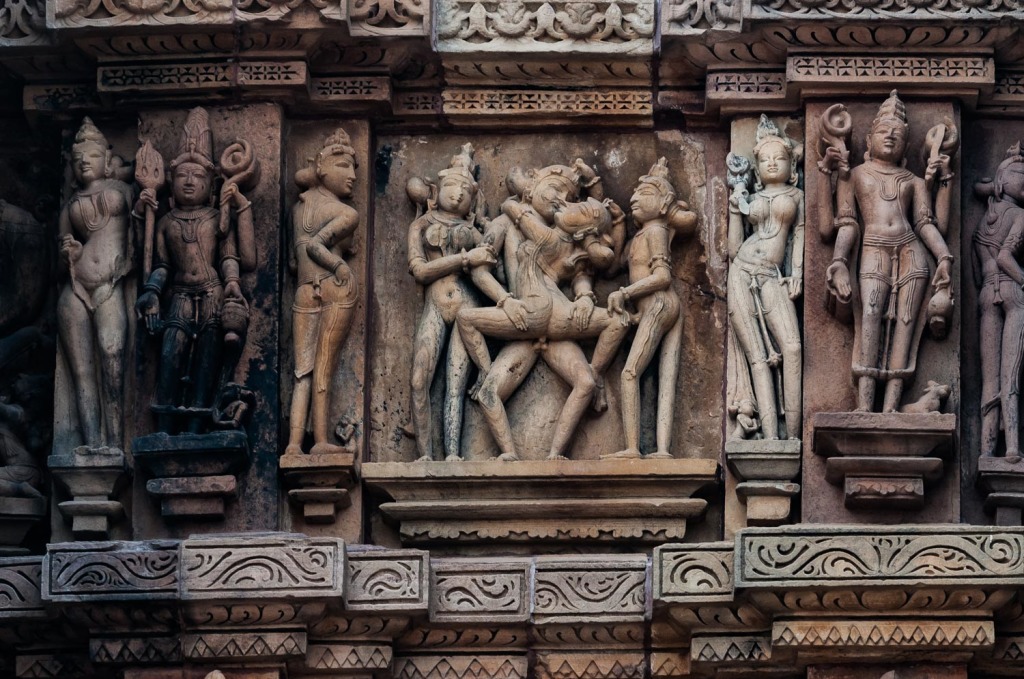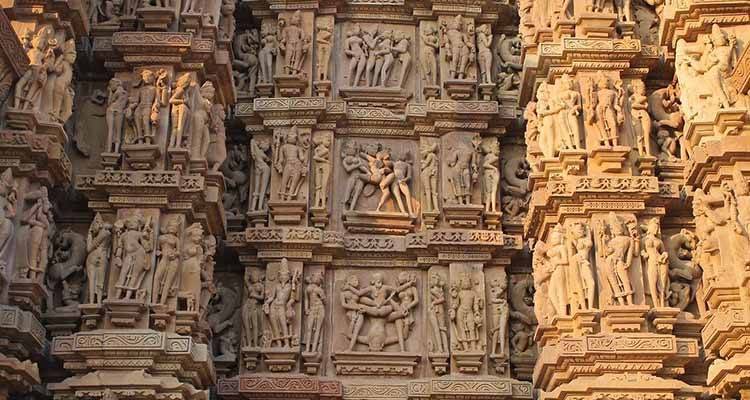The inclusion of sexual sculptures in temples can be understood within the cultural context of ancient societies. In many cultures, including ancient India, sexuality and fertility were considered sacred aspects of life. Temples, as places of worship and celebration of life's various facets, often incorporated these themes to honour the divine forces associated with creation and procreation.
Sexual sculptures in temples are laden with symbolism and allegory. They represent the union of masculine and feminine energies, symbolising the harmony of opposites and the balance necessary for creation to occur. These sculptures serve as reminders of the interconnectedness of all aspects of life, including the physical and spiritual realms.
Tantric traditions, which emphasise the integration of spirituality and physicality, have played a role in the presence of sexual sculptures in some temples. Tantra views sexual energy as a powerful force for spiritual awakening and transformation. Thus, these sculptures can be seen as symbolic representations of the divine union and the exploration of heightened states of consciousness.
Temples are not just places of worship but also community centres where people gather to commemorate life's milestones. The presence of sexual sculptures in temples signifies a celebration of life and the acknowledgement of human experiences, including sensuality and fertility, as integral parts of the divine tapestry.
The explicit nature of these sculptures encourages contemplation and reflection. They challenge visitors to move beyond the superficial and delve into the deeper aspects of human existence. By engaging with these sculptures, individuals may be prompted to explore the mysteries of creation, the interplay of energies, and the transcendence of physical limitations.
Conclusion: The presence of sexual sculptures in temples is a testament to the intricate symbolism, cultural beliefs, and spiritual expressions embedded within ancient religious art. These sculptures, while initially evoking curiosity, ultimately serve as reminders of the divine harmony in the cycle of life. Understanding the historical, cultural, and spiritual contexts behind these sculptures allows us to appreciate their deeper meanings and recognize the multifaceted nature of human existence as a reflection of the divine.




No comments:
Post a Comment